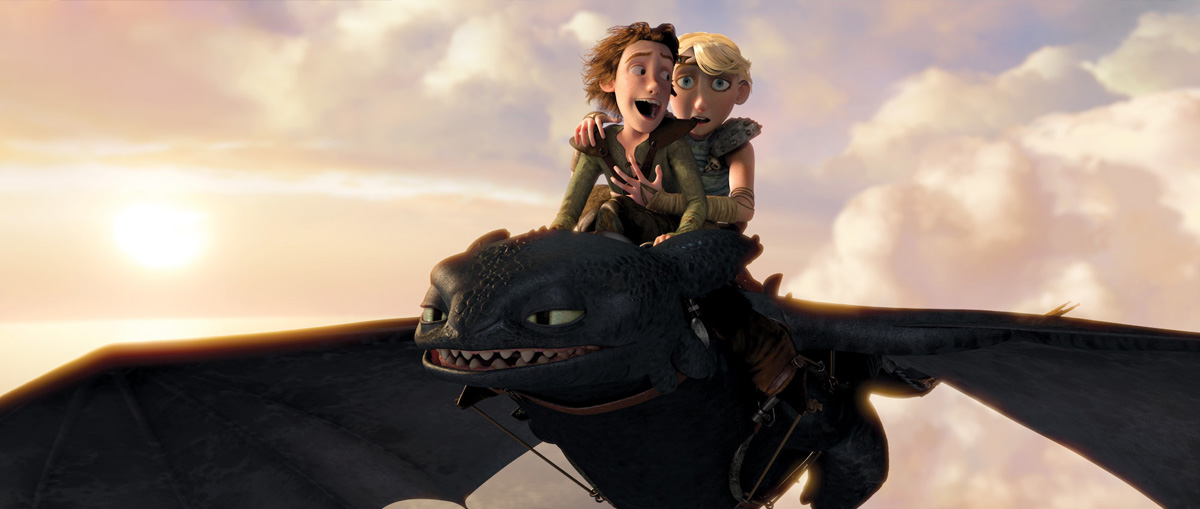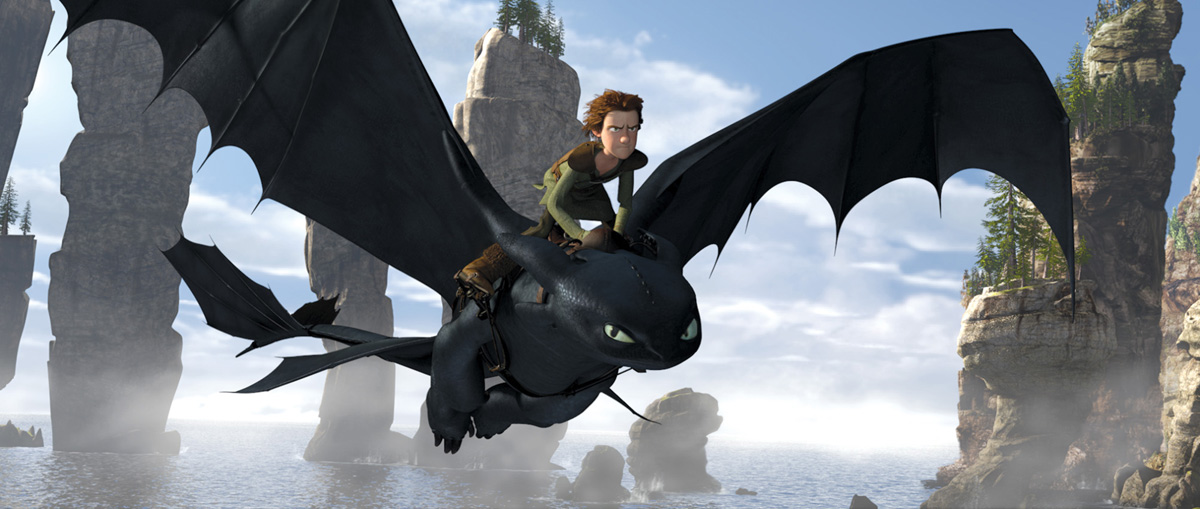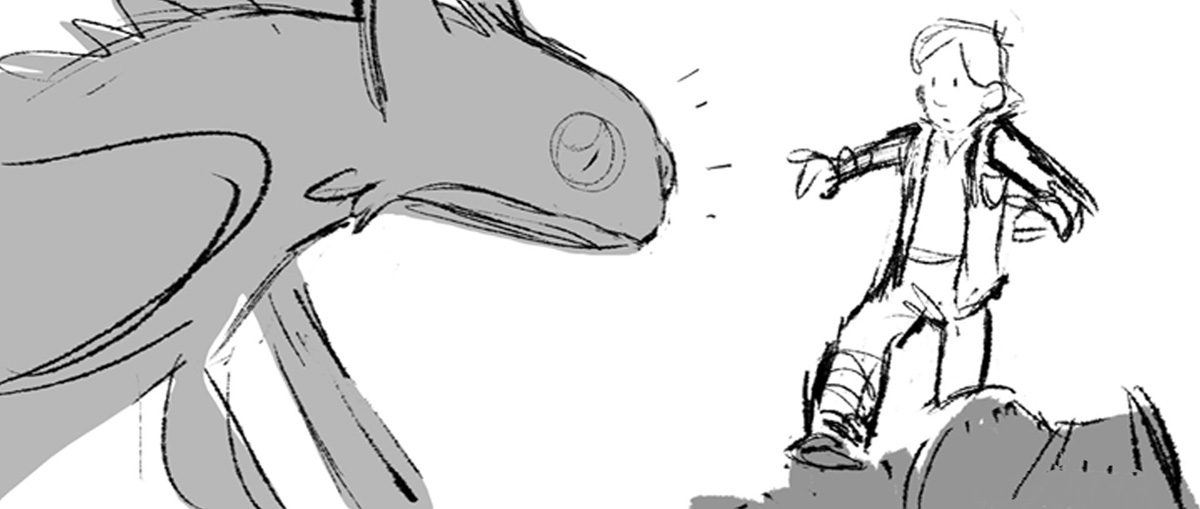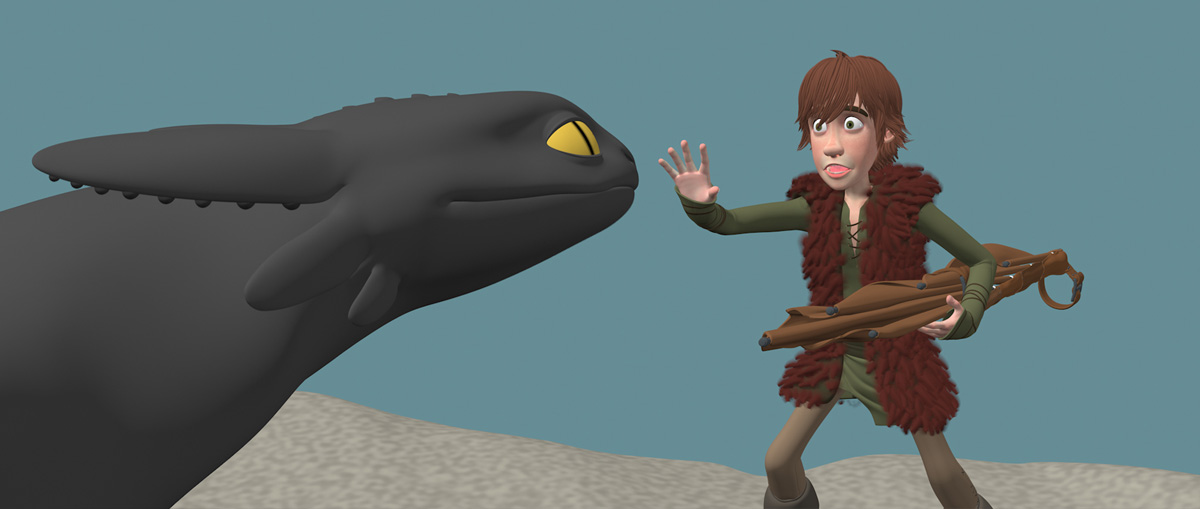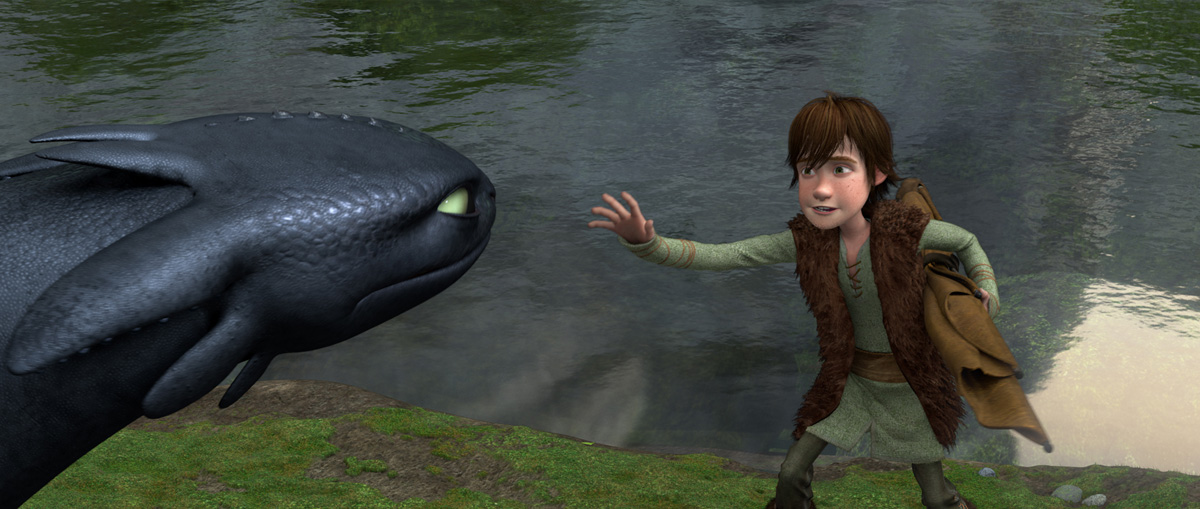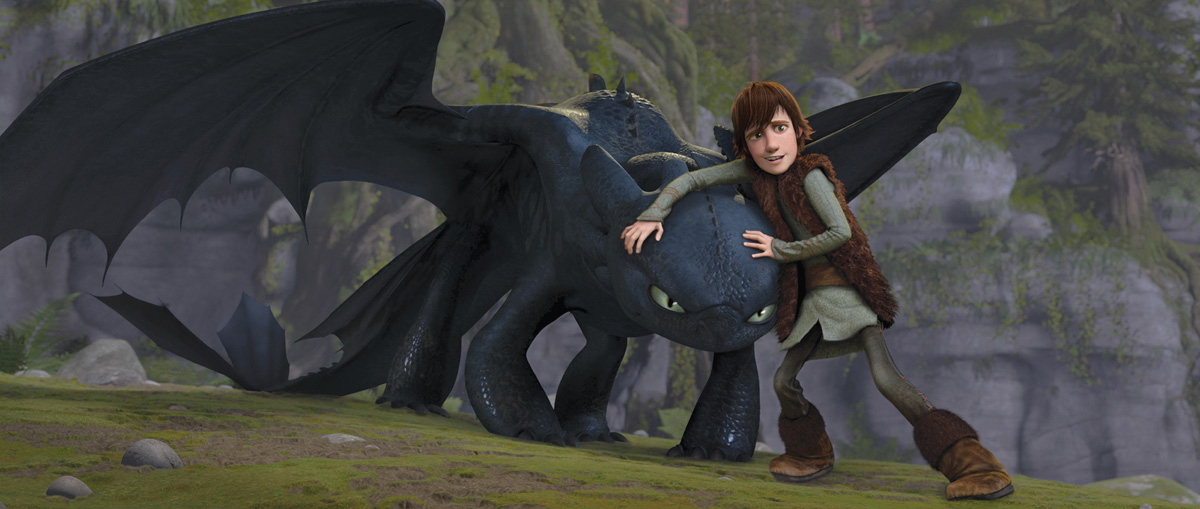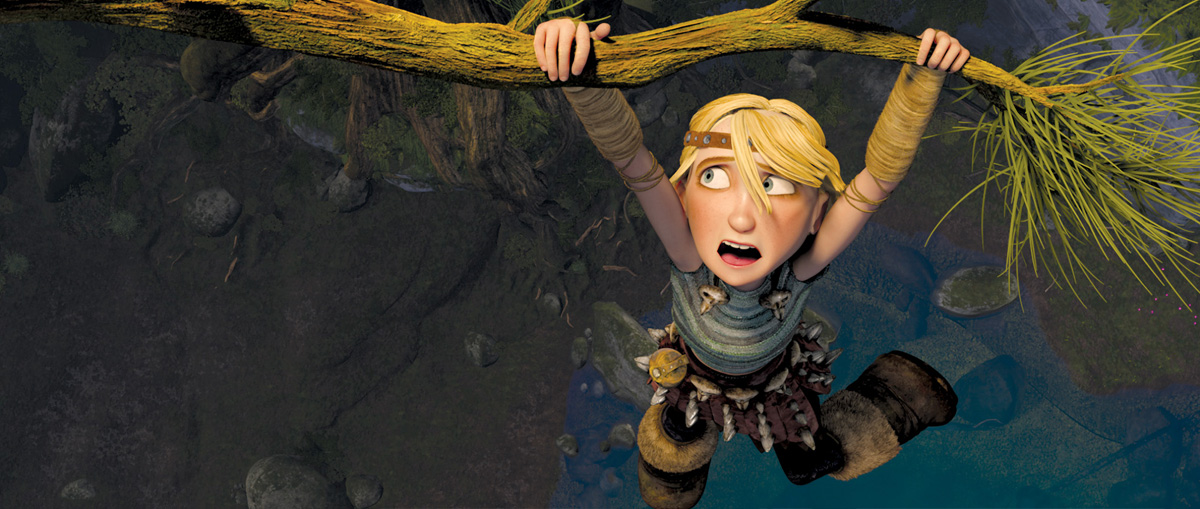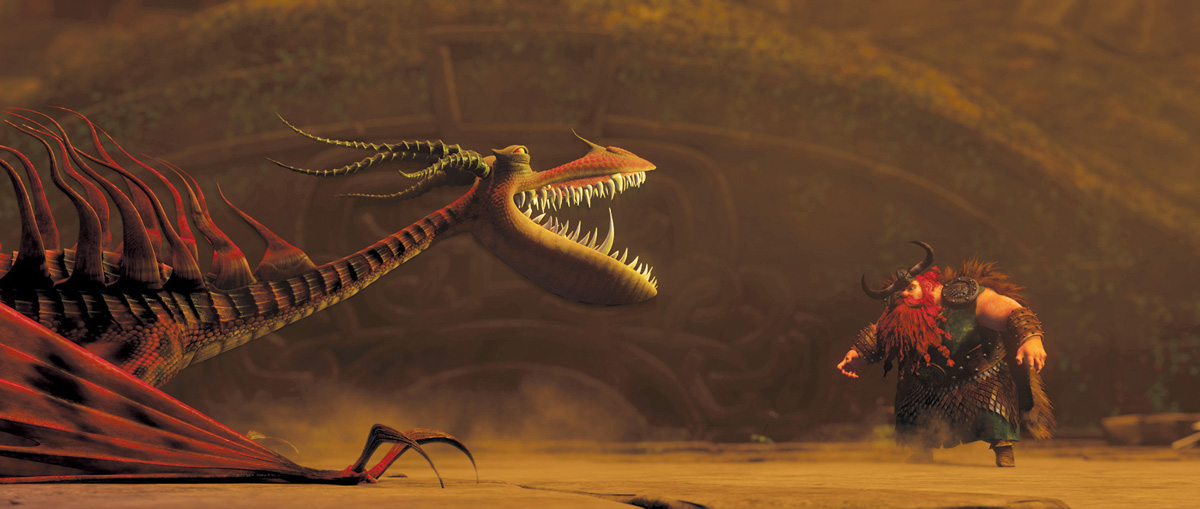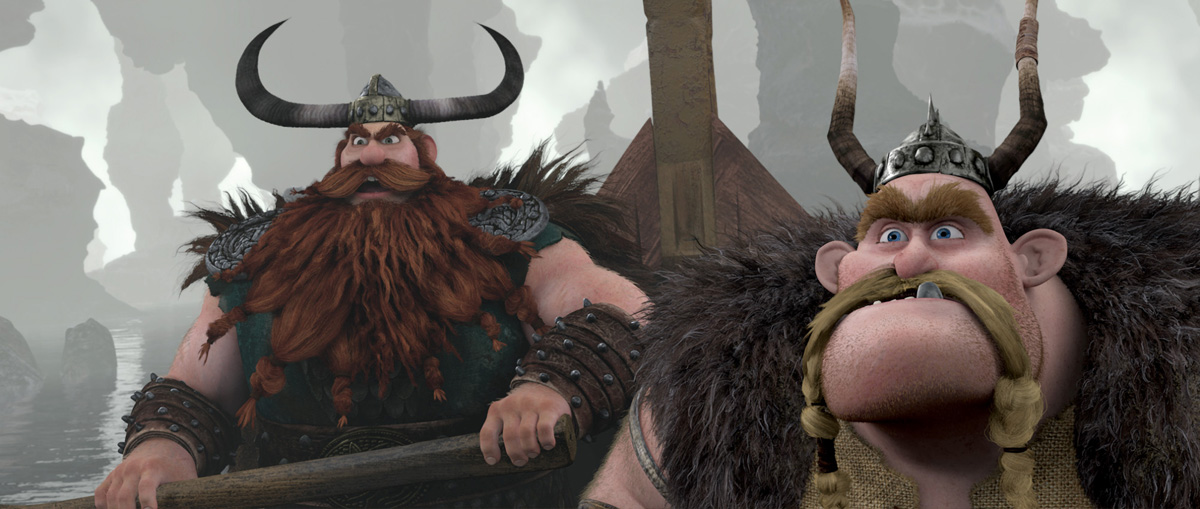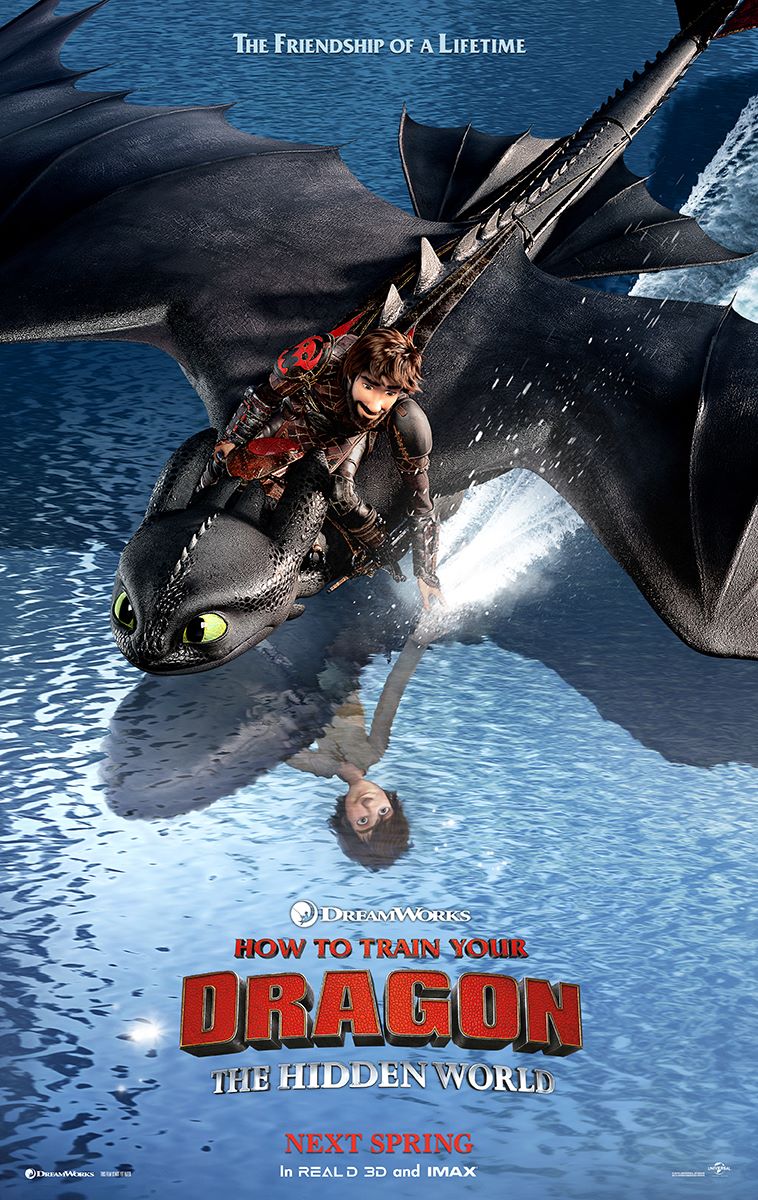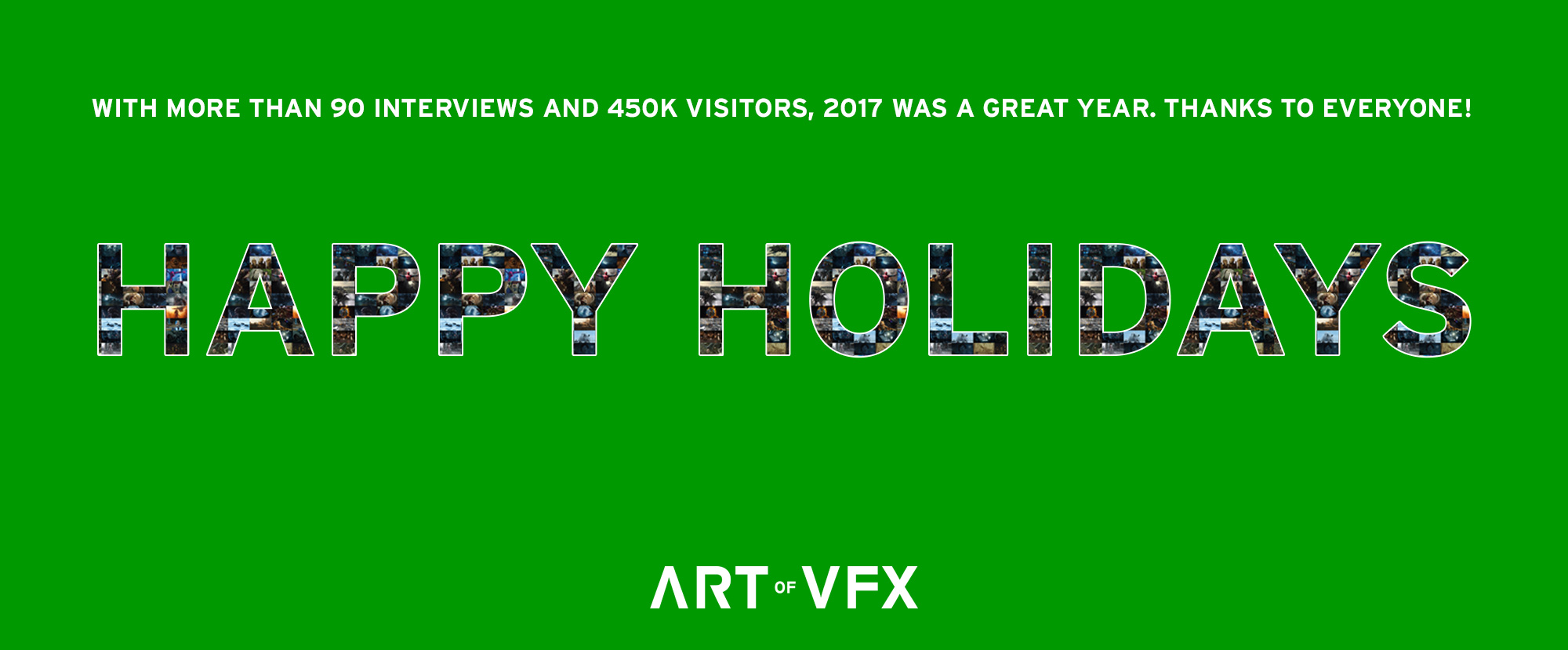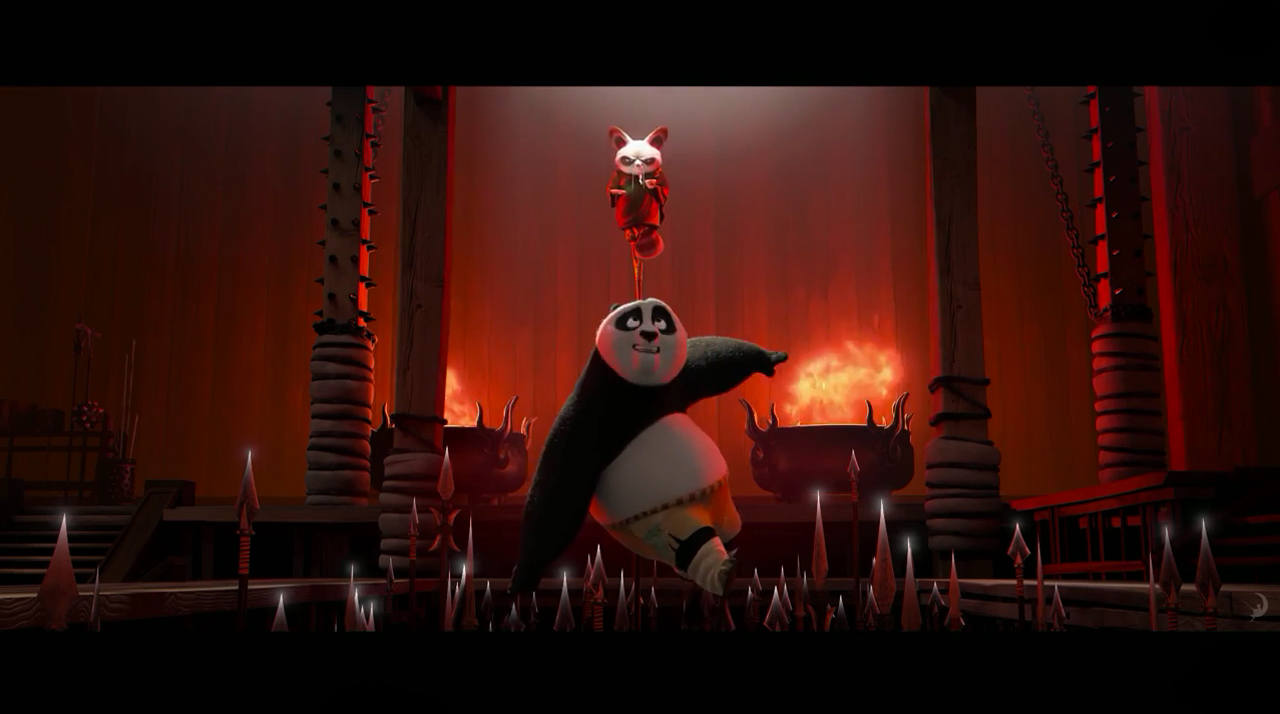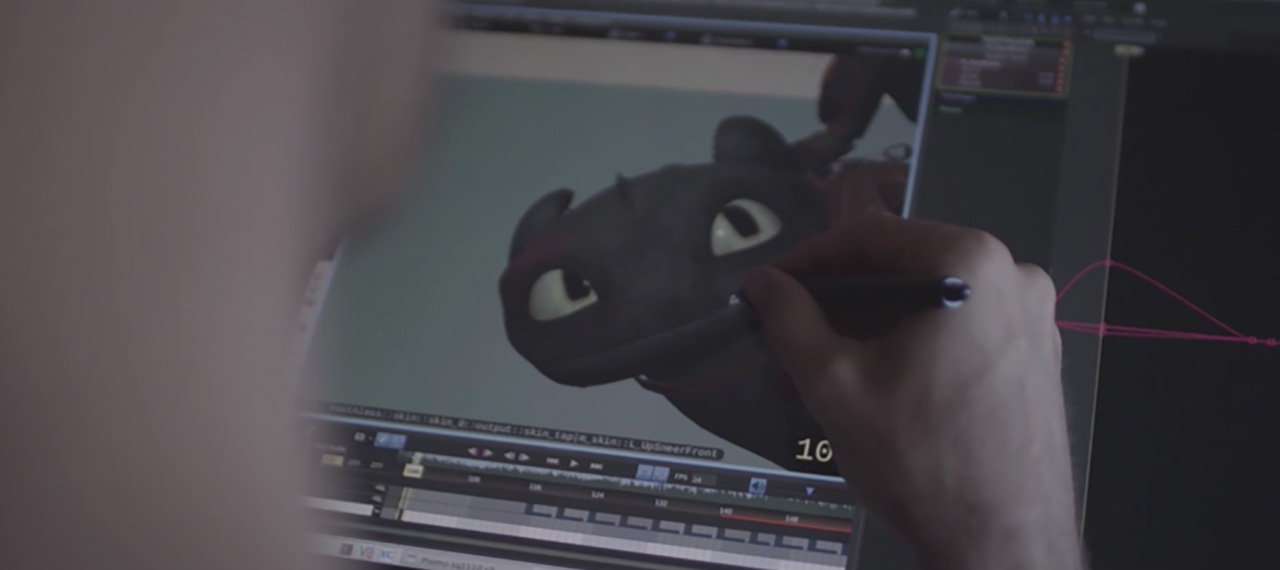After banking studies in Switzerland, Simon Otto pass through Les Gobelins animation school before being hired by Dreamworks Animation. It was In 1997 and since Simon has not left Dreamworks and worked almost all projects in the studio as THE PRINCE OF EGYPT, SPIRIT, SINBAD, FLUSHED AWAY as a animator and lead animator. He recently completed HOW TO TRAIN YOUR DRAGON on which he was head of character animation.
Can you tell us about your background?
I wanted to become a cartoonist at an early age. I was completely enchanted by the old Disney movies and admired the stories Franquin, Uderzo or Herge were able to create with their incredible draftsmanship. In rural Switzerland, working in such an artistic field was as unrealistic as becoming an astronaut, so I ended up doing a banking apprenticeship in my hometown.
I knew quite quickly that being a banker was not going to make me happy, so I started pursuing my artistic career with determination. After my military service I worked as a snow sculptor for about a year and shortly thereafter managed to get into the F&F Schule fur experimentelle Gestaltung in Zurich. After a summer internship at an animation studio in Lausanne (Animagination), I found my way to Les Gobelins animation school in Paris, which is one of the most prestigious animation schools in the world.
In my year, there were about 900 applicants and after three rounds of testing, they finally accepted 20 students into the program. Lucky for me, the big Hollywood studios knew about Les Gobelins, since a lot of their talent were former students. I had a contract offer in my hands about a year later. I moved to Los Angeles right after my graduation and started working as a 2D animator on THE PRINCE OF EGYPT in the Summer of 1997. I’ve been at the studio ever since and have worked as an Animator and Supervising Animator on many of the Studio’s animated features both in 2D and in CG, including THE ROAD TO EL DORADO, SPIRIT: STALLION OF THE CIMARRON, SINBAD: LEGEND OF THE SEVEN SEAS et SHARK TALE. I have worked as a character designer on OVER THE HEDGE and before HOW TO TRAIN YOUR DRAGON I did some additional animation on THE BEE MOVIE and KUNG FU PANDA and then was one of the Supervising Animators on the Aardman co-production, FLUSHED AWAY.
How many time have you worked on HOW TO TRAIN YOUR DRAGON?
I spent three and a half years on this production. For the first two years, I oversaw the entire process of bringing Nico Marlet’s character designs into the digital world. This meant doing a lot of design work myself and working closely with the modelers, riggers and the surfacing department. During this time we also had to figure out a lot of systems for the complex dragon rigs, such as simulations, flap cycle systems and pose libraries for example. Once we achieved the desired look, I took these “digital puppets” and fleshed out their personalities along with a few of our senior animators.
Once production started, my job was to make sure the style, quality and clarity of the animation was as desired while making sure we executed efficiently. I consulted the directors on everything related to character animation and, along with our seven Supervising Animators, oversaw the entire character animation team.
What is a Animation Supervisor?
On previous CG films at DreamWorks, a Supervising Animator used to oversee the animation of an entire sequence and animate all the character animation with a team of about 5-10 animators. On HOW TO TRAIN YOUR DRAGON, I was lucky to have a team of Supervising Animators available that were incredibly experienced and a good part of them had been Supervising Animators on 2D films prior to working on DRAGON. With this kind of firepower and considering the complexity of the characters – we had realistic human characters as well as complex dragon rigs – I felt strongly about approaching the movie using a hybrid casting system where each Supervising Animator was in charge of a specific character. So, depending on which character was leading the shot, we cast the shot out to the specific character teams. The advantage was that animators became tremendous experts in their characters and we were able to track very specific performance ideas throughout the movie.
How was the collaboration with the directors?
Animation directors usually spend a great deal of time with the character animation department. Since the directors are at the studio all the time, we manage to get about 1½ hours of dailies in the morning and 1½ hours of walk- around-time in the afternoon, where the directors walk from desk to desk to spend one-on-one time with individual artists. The times increase the closer to the end of the production we get. DRAGON was a bit different, since our directors came to the production fairly late and they still had a lot of writing to do. We mostly handled all the big issues in dailies and then I did walk-arounds with the Head of Layout and each specific Supervising Animator.
The Head of Character Animation and the Supervising Animators have a lot of exposure to the directors early on in a production as they discuss characters and sequences. Once sequences get launched into animation, we get all the animators together and discuss one shot after another. Animators usually come prepared and already bring ideas to the launch.
Chris Sanders and Dean DeBlois have a lot of experience with animation. They knew what seasoned animators could bring to the characters. Throughout the production there was a tremendous sense of respect and appreciation between the animators and the directors, which created an environment of great creativity. The directors presented their vision with competence and clarity. Particularly when it came to giving feedback, they were very grateful for good ideas and respected quality work. Fear wasn’t a factor, which allowed animators to even make fools of themselves when presenting their ideas.
Were you able to purpose ideas and if yes, which ones?
Most great ideas came out of some sort of collaboration, and as a group, the animation team brought a lot of those to the film. Personally, I’m most proud of the creation of Toothless as a character that had to walk the line between a fierce creature and an adorable companion. We were looking for ways to bring the audience into the experience and have them be reminded of their own pets.
I also particularly like the decision to make the last fireball shot after the giant explosion a slow-motion shot, which I had suggested. This shot gives me chills every time I see it.
What was the main challenge on this movie?
The biggest challenge lay in the style of the animation and the creation of a believable world. You can’t make a movie about Vikings without having beards, hair and fur constantly interacting. And because of our story’s dramatic undertone, we felt it required an animation style that was fairly realistic, so a purely graphic or cartoony solution to that problem wasn’t going to cut it.
Soon enough, we also realized that we had a tremendous opportunity at hand. All movies about dragons that had been created up to this point, had either hand drawn cartoony dragons in them or featured CG creatures that had to match a live action plate. We, on the other hand, had a world of dragons to create that could seem realistic but that didn’t need to match a photorealistic image. We were able to really have fun with them, make them colorful, create different species and make them funny and dangerous at the same time.
Was were the animation references for the dragons?
We looked at what had been done before in movies, but soon realized that we needed to dig deeper. So, we looked everywhere in nature for references. For each of the characters we created a movie playlist that mixed all of the references together and we would update this list as we went through production, collecting more and more inspirational material as we went along.
The Gronckle for example is a cross-breed between a crocodile, a bumble bee and a Harley-Davidson. Toothless was inspired by the stare of a wolf, the behavior pattern and overall look of a black panther and the wing beat of a bat. For shot specific actions, we ended up studying wombats, small birds of prey and especially cats and dogs.
How was the collaboration with the others departments (concept, rigging, …)?
It starts out very linearly, where an approved design gets handed from one department to the next and the characters go through the standard approval process with directors, production designer and VFX supervisor. This usually only lasts for a short while, because the show is generally still searching for the final story and production design and things have to get adjusted and remodeled and sometimes even re-rigged. The “Terrible Terror,” the little gecko-like dragon used to be the original Toothless, for example.
We were a fairly small group of people for quite some time. Nico Marlet was the main designer and we had worked closely together before on OVER THE HEDGE. We put a lot of effort into maintaining the graphic quality of the original ideas that were on paper. There was a lot of talent and willingness coming from the modeling and rigging departments and we ended up being very satisfied with the results.
What was the most complicated character to animate?
The two-headed dragon was the most complex character to animate, but luckily we didn’t have that many shots of him. Toothless was very tricky, because he could look different quite quickly depending on the camera angle and of course because he is a quadruped with two sets of wings and a tail with a fin at the end. His rig is approximately 8 times as complex as the dragon rig in the original SHREK.
Hiccup was the hardest character to make interesting. This is a common hurdle in animation, because the hero is the character with the least amount of caricature in order to be the hero for all.
What was a typical day on DRAGON?
At the peak of production, which lasted around 8 months, I would usually get in around 7:30 am and animate on my shot until about 9:30 am. After that I would have a series of sequence meetings, scheduling meetings and other discussions before I’d do rounds with the animators around 11:00 am. After a short lunch I would try and reply to e-mails and notes and do some draw-overs for animators before I had to go to more task-specific meetings. At around 4:30 pm we usually started dailies that could last up to three hours. After a quick bite I would go back to my desk and try and animate if possible. I usually tried to finish my day before 10:00 pm.
DRAGON was a very aggressive production schedule, due to the late arrival of Chris & Dean. It was quite atypical for DreamWorks as animators usually manage to get their work done in a regular 8-10 hour day.
What is your pipeline at Dreamworks?
We use a lot of proprietary software, except for previz and layout, which are done in Maya. Our animation software is developed in house and is called Emo. We have significant development resources and are currently working very closely with Intel and HP in developing our next generation software packages.
What were the shots that prevented you from sleeping?
Fine tuning Stoick’s beard simulation was a huge undertaking and demanded several months of rigging time.
One of the biggest frustrations though, was the work we did on the flying shots. In order to create a real sense of speed, some of our shots had to travel at 700-1000 km/h. So, if there were just the slightest imperfection in the camera curve, our characters would be jumping around as if they were really badly animated. This caused some tense nerves amongst the animators.
What was your best moment on this show?
Showing the directors and producers our first pass of the sequence where Hiccup befriends Toothless. It was a truly emotional moment. We knew we had a film in our hands that was going to be special.
What is your next project?
I’m not sure yet, but due to its outstanding run at the U.S. box office so far, everything is pointing towards a sequel to HOW TO TRAIN YOUR DRAGON.
What are the four films that gave you the passion for cinema?
THE JUNGLE BOOK, THE ARISTOCATS, BACK TO THE FUTURE and INDIANA JONES – RAIDERS OF THE LOST ARK.
// EN SAVOIR PLUS ?
– HOW TO TRAIN YOUR DRAGON: Official website for HOW TO TRAIN YOUR DRAGON.
© Vincent Frei – The Art of VFX – 2010


